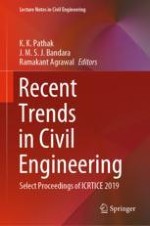2021 | OriginalPaper | Buchkapitel
Bacterial Concrete for the Development of Sustainable Construction—A Review
verfasst von : S. Jena, B. Basa, K. C. Panda
Erschienen in: Recent Trends in Civil Engineering
Verlag: Springer Singapore
Aktivieren Sie unsere intelligente Suche, um passende Fachinhalte oder Patente zu finden.
Wählen Sie Textabschnitte aus um mit Künstlicher Intelligenz passenden Patente zu finden. powered by
Markieren Sie Textabschnitte, um KI-gestützt weitere passende Inhalte zu finden. powered by
